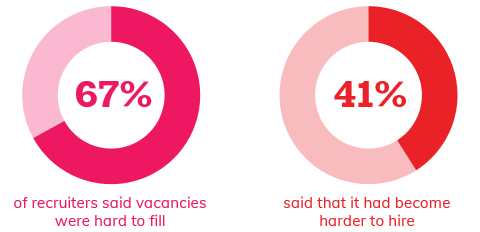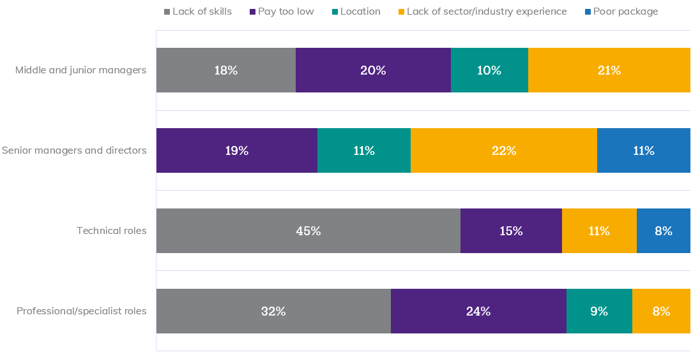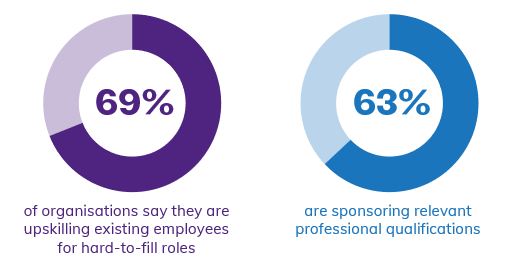One of the key measures for HR and talent acquisition teams is time to hire or time to fill. But we all know that a few hard-to-fill roles can increase the average significantly, as well as adding challenges to busy teams.
What can businesses do when faced with roles that are difficult to fill? We look at the reasons, the impact of the pandemic and how recruiters can find the right talent and close off the vacancy with the right person for the role.
It’s no secret that COVID has had an impact on many areas of HR and recruitment. However, while some roles continued to be difficult to fill, some of the challenges were temporarily mitigated as many businesses placed hiring on hold amidst a backdrop of furlough and uncertainty.
It’s therefore useful to look at data from before the pandemic to see what was happening. In mid-2019, research showed:

With a possible talent shuffle on the horizon as hiring increases and opportunities become more widespread, these issues may again become pressing.
In addition to many companies introducing a hiring freeze, the pandemic has had a wider impact on recruitment issues. New staff shortages are on the rise - and in industries that often do not face these challenges.
The impact of the pandemic led to the closure of many businesses, especially those in the hospitality industry. With almost a year of restrictions, many employees were forced to find alternative roles in different industries. Those career changes are now having an impact as hospitality businesses look to reopen – and many pubs and restaurants are struggling to find staff. The latest figures show that in April 2021 vacancies in the UK hospitality industry were up 77% but applications were down 82% year-on-year.
Other areas impacted by the pandemic, where demand outstrips supply include:
The changing nature of work as we all adjust to the new normal means that ongoing adjustments are likely. Indeed, research from McKinsey shows that in the UK alone up to 10 million people may transition to new occupations by 2030. It’s therefore important that companies can keep pace.
With many roles proving challenging to fill, it’s essential that HR and TA teams can take steps to increase the chance of success.
There are many possible reasons that roles are difficult to fill. These can include employer brand perceptions, location, salary and benefits, skills shortages and competition from other employers.
Research showed that employers said the main issues varied by type of role:

However, our experience with clients shows that the reasons are often unknown or only assumed, due to lack of insights. We have helped many of our clients to understand the reasons that roles are hard-to-fill and enabled them to make changes to attract the best talent. Find out more by reading our case study.
Many companies only focus on their employer brand when they are recruiting. As with all brand activity, adopting an “always-on” approach is best. By allowing employees to tell engaging stories about their work and build a picture of what it’s like to work at the company, businesses can raise their profile and generate interest even before roles become available.
Nurturing future talent can make it easier to fill roles from within. This is something that many employers recognise:

Source: CIPD
Ensuring your employees receive the right training enables you them to grow, which not only makes it easier to recruit internally but also help to retain your current and future talent, making the most of the investment.
There will be times when the right talent needs to be found outside the business. As shown above, location is frequently mentioned as an issue which impacts recruitment. However, for some roles where remote working is viable, new ways of working offer recruiters a new, national or global talent pool. Companies who can embrace remote work open up access to candidates based outside the local area.
In addition to looking at candidates based beyond the local catchment area, companies who take a proactive approach and reach out to passive candidates also increase their chances of success. If you need support, we can help to identify the best talent by mapping the market and also to make approaches, if required.
Our guide takes an in-depth look at the best approach to prepare your business for the future.
© Talent Insight Group 2025